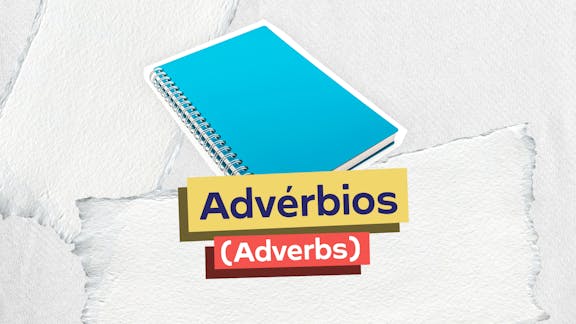In questions, sentences from the text may have been modified/adapted to fit certain grammatical structures.
In the text, the function of the words
retooling, turning, training, consulting, and
stemming is respectively
In questions, sentences from the text may have been modified/adapted to fit certain grammatical structures.
In the text, the function of the words
retooling, turning, training, consulting, and
stemming is respectively
TEXT
The need to constantly adapt is the new reality for
many workers, well beyond the information
technology business. Car mechanics, librarians,
doctors, Hollywood special effects designers —
virtually everyone whose job is touched by
computing — are being forced to find new, more
efficient ways to learn as retooling becomes
increasingly important not just to change careers,
but simply to stay competitive on their chosen path.
Going back to school for months or years is not
realistic for many workers, who are often left to
figure out for themselves what new skills will make
them more valuable, or just keep them from
obsolescence. In their quest to occupy a useful
niche, they are turning to bite-size instructional
videos, peer-to-peer forums and virtual college
courses.
Lynda Gratton, a professor of management practice
at the London Business School, has coined a term
for this necessity: “serial mastery.”
“You can’t expect that what you’ve become a master
in will keep you valuable throughout the whole of
your career, and you want to add to that the fact
that most people are now going to be working into
their 70s,” she said, adding that workers must try to
choose specialties that cannot be outsourced or
automated. “Being a generalist is, in my view, very
unwise. Your major competitor is Wikipedia or
Google.”
Businesses have responded by pouring more money
into training, even in the current economic
doldrums, according to several measures. They have
experimented by paying employees to share their
expertise in internal social networks, creating video
games that teach and, human resources consultants
say, enticing employees with tuition help even if
they leave the company.
Individuals have also shouldered a lot of
responsibility for their own upgrades. Lynda.com,
which charges $25 a month for access to training
videos on topics like the latest version of Photoshop,
says its base of individual customers has been
growing 42 percent a year since 2008. Online
universities like Udacity and Coursera are on pace to
double in size in a year, according to Josh Bersin of
Bersin & Associates, a consulting firm that
specializes in learning and talent management. The
number of doctors participating in continuing
education programs has more than doubled in the
last decade, with the vast majority of the growth
stemming from the increased popularity of
Internet-based activities, according to the
Accreditation Council for Continuing Medical
Education in Chicago.
The struggle is not just to keep up, but to anticipate
a future of rapid change. When the AshevilleBuncombe Technical Community College in North Carolina wanted to start a program for developing
smartphone and tablet apps, the faculty had to
consider the name carefully. “We had this title
Mobile Applications, and then we realized that it
may not be apps in two years, it may be
something else,” said Pamela Silvers, the
chairwoman of the business computer technologies
department. “So we changed it to Mobile
Development.”
As the metadata and digital archivist at Emory
University, Elizabeth Russey Roke, 35, has had to
keep up with evolving standards that help different
databases share information, learn how to archive
“born digital” materials, and use computers to
bring literary and social connections among
different collections to life. The bulk of her learning
has been on the job, supplemented by the
occasional course or videos on Lynda.com.
“For me, it’s easier to learn something in the
classroom than it is on my own,” she said. “But I
can’t exactly afford another three years of library
school.”
Rapid change is a challenge for traditional
universities; textbooks and even journals often lag
too far behind the curve to be of help, said Kunal
Mehta, a Ph.D. student in bioengineering at
Stanford University. His field is so new, and
changing so rapidly, he said, that there is little
consensus on established practices or necessary
skills. “It’s more difficult to know what we should
learn,” he said. “We have advisers that we work
with, but a lot of times they don’t know any better
than us what’s going to happen in the future.”
Instead, Mr. Mehta, 26, spends a lot of time
comparing notes with others in his field, just as
many professionals turn to their peers to help
them stay current. The International Automotive
Technicians Network, where mechanics pay $15 a
month to trade tips on repairs, has more than
75,000 active users today, up from 48,000 in
2006, said Scott Brown, the president.
In an economy where new, specialized knowledge
is worth so much, it may seem anticompetitive to
share expertise. But many professionals say they
don’t see it that way.
“We’re scattered all over the country, Australia,
New Zealand, the U.K., so it never really bothered
us that we were sharing the secrets of what we
do,” said Bill Moss, whose repair shop in
Warrenton, Va., specializes in European cars, and
who is a frequent user of peer-to-peer forums.
Mr. Moss, 55, said technological advances and
proprietary diagnostic tools had forced many
garages to specialize. Ten years ago, if his
business had hit a slow patch, he said, he would
have been quicker to broaden his repertory. “I
might have looked at other brands and said,
‘These cars aren’t so bad.’ That’s much harder to
do now, based on technology and equipment
requirements.” His training budget is about $4,000
a year for each repair technician.
Learning curves are not always driven by
technology. Managers have to deal with different
cultures, different time zones and different
generations as well as changing attitudes. As
medical director of the Reproductive Science Center
of New England, Dr. Samuel C. Pang has used
patient focus groups and sensitivity training to help
the staff adjust to treating lesbian couples, gay male
couples, and transgendered couples who want to
have children. This has given the clinic a competitive
advantage.
“We have had several male couples and lesbian
couples come to our program from our competitors’
program because they said they didn’t feel
comfortable there,” Dr. Pang said.
On top of that, he has to master constantly evolving
technology. “The amount of information that I
learned in medical school is minuscule,” he said,
“compared to what is out there now.”
http://www.nytimes.com/2012/09/22
TEXT
The need to constantly adapt is the new reality for many workers, well beyond the information technology business. Car mechanics, librarians, doctors, Hollywood special effects designers — virtually everyone whose job is touched by computing — are being forced to find new, more efficient ways to learn as retooling becomes increasingly important not just to change careers, but simply to stay competitive on their chosen path.
Going back to school for months or years is not realistic for many workers, who are often left to figure out for themselves what new skills will make them more valuable, or just keep them from obsolescence. In their quest to occupy a useful niche, they are turning to bite-size instructional videos, peer-to-peer forums and virtual college courses.
Lynda Gratton, a professor of management practice at the London Business School, has coined a term for this necessity: “serial mastery.”
“You can’t expect that what you’ve become a master in will keep you valuable throughout the whole of your career, and you want to add to that the fact that most people are now going to be working into their 70s,” she said, adding that workers must try to choose specialties that cannot be outsourced or automated. “Being a generalist is, in my view, very unwise. Your major competitor is Wikipedia or Google.”
Businesses have responded by pouring more money into training, even in the current economic doldrums, according to several measures. They have experimented by paying employees to share their expertise in internal social networks, creating video games that teach and, human resources consultants say, enticing employees with tuition help even if they leave the company.
Individuals have also shouldered a lot of responsibility for their own upgrades. Lynda.com, which charges $25 a month for access to training videos on topics like the latest version of Photoshop, says its base of individual customers has been growing 42 percent a year since 2008. Online universities like Udacity and Coursera are on pace to double in size in a year, according to Josh Bersin of Bersin & Associates, a consulting firm that specializes in learning and talent management. The number of doctors participating in continuing education programs has more than doubled in the last decade, with the vast majority of the growth stemming from the increased popularity of Internet-based activities, according to the Accreditation Council for Continuing Medical Education in Chicago.
The struggle is not just to keep up, but to anticipate a future of rapid change. When the AshevilleBuncombe Technical Community College in North Carolina wanted to start a program for developing smartphone and tablet apps, the faculty had to consider the name carefully. “We had this title Mobile Applications, and then we realized that it may not be apps in two years, it may be something else,” said Pamela Silvers, the chairwoman of the business computer technologies department. “So we changed it to Mobile Development.”
As the metadata and digital archivist at Emory University, Elizabeth Russey Roke, 35, has had to keep up with evolving standards that help different databases share information, learn how to archive “born digital” materials, and use computers to bring literary and social connections among different collections to life. The bulk of her learning has been on the job, supplemented by the occasional course or videos on Lynda.com.
“For me, it’s easier to learn something in the classroom than it is on my own,” she said. “But I can’t exactly afford another three years of library school.”
Rapid change is a challenge for traditional universities; textbooks and even journals often lag too far behind the curve to be of help, said Kunal Mehta, a Ph.D. student in bioengineering at Stanford University. His field is so new, and changing so rapidly, he said, that there is little consensus on established practices or necessary skills. “It’s more difficult to know what we should learn,” he said. “We have advisers that we work with, but a lot of times they don’t know any better than us what’s going to happen in the future.”
Instead, Mr. Mehta, 26, spends a lot of time comparing notes with others in his field, just as many professionals turn to their peers to help them stay current. The International Automotive Technicians Network, where mechanics pay $15 a month to trade tips on repairs, has more than 75,000 active users today, up from 48,000 in 2006, said Scott Brown, the president.
In an economy where new, specialized knowledge is worth so much, it may seem anticompetitive to share expertise. But many professionals say they don’t see it that way.
“We’re scattered all over the country, Australia, New Zealand, the U.K., so it never really bothered us that we were sharing the secrets of what we do,” said Bill Moss, whose repair shop in Warrenton, Va., specializes in European cars, and who is a frequent user of peer-to-peer forums.
Mr. Moss, 55, said technological advances and proprietary diagnostic tools had forced many garages to specialize. Ten years ago, if his business had hit a slow patch, he said, he would have been quicker to broaden his repertory. “I might have looked at other brands and said, ‘These cars aren’t so bad.’ That’s much harder to do now, based on technology and equipment requirements.” His training budget is about $4,000 a year for each repair technician.
Learning curves are not always driven by technology. Managers have to deal with different cultures, different time zones and different generations as well as changing attitudes. As medical director of the Reproductive Science Center of New England, Dr. Samuel C. Pang has used patient focus groups and sensitivity training to help the staff adjust to treating lesbian couples, gay male couples, and transgendered couples who want to have children. This has given the clinic a competitive advantage.
“We have had several male couples and lesbian couples come to our program from our competitors’ program because they said they didn’t feel comfortable there,” Dr. Pang said.
On top of that, he has to master constantly evolving technology. “The amount of information that I learned in medical school is minuscule,” he said, “compared to what is out there now.”
http://www.nytimes.com/2012/09/22






